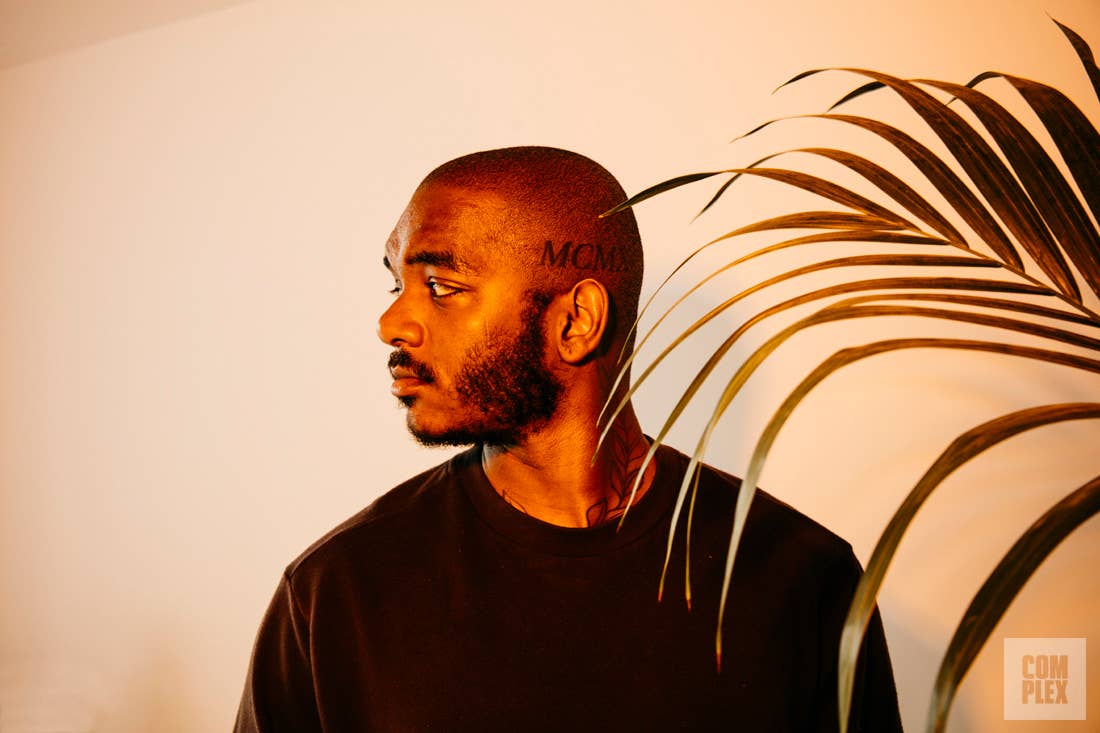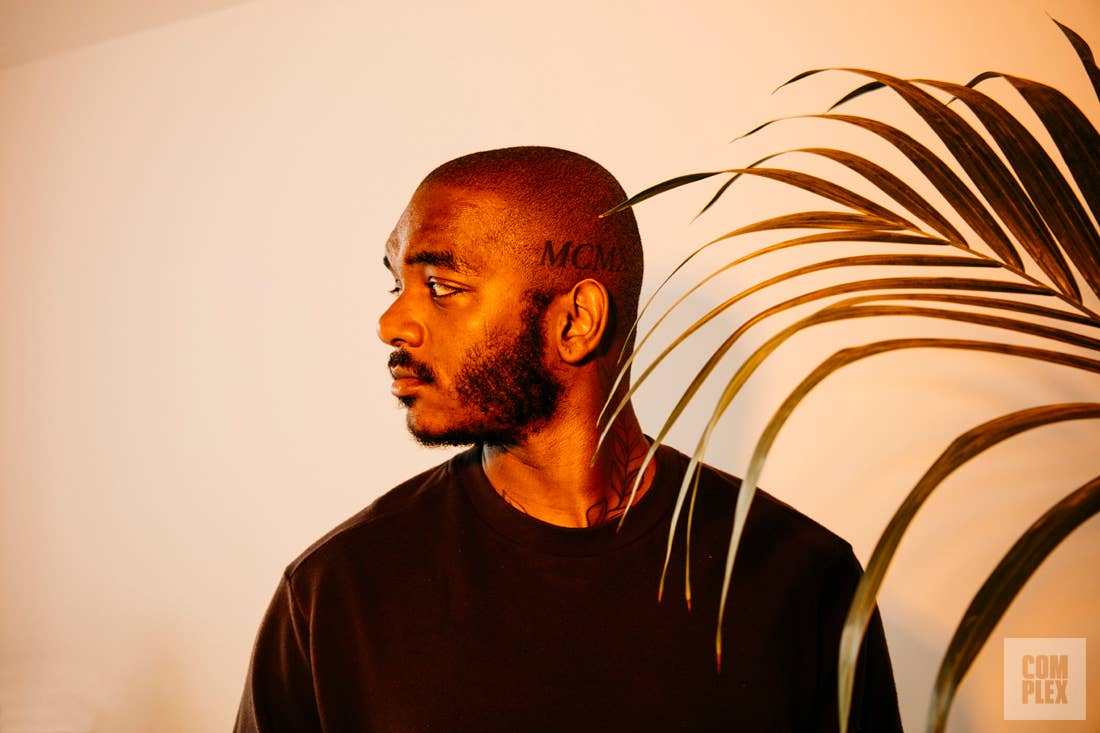
Samuel Ross would like his bags, and he would like them quickly. It's an early April morning and the 25-year-old founder and creative lead behind A-Cold-Wall—one of the UK's buzziest labels, from one of its most promising young designers—is standing on the floor of the East London factory where his accessories are produced. Although it looks like public parking from the outside, the space houses accessories for fashion industry heavy hitters from Burberry to Victoria Beckham—and now Ross' label—within its walls. The impressive resume is a testament to the talent of the craftspeople who keep it humming, one of whom does not want to work overtime to make up for a missed day during the upcoming Easter holiday.
"If you push me more, I'll be in the hospital," the bag maker says.
Ross offers to pay for his treatment, and the tension that had been gently building quickly dissolves. Another factory employee finally agrees to come in on Saturday to help meet the earlier-than-initially-agreed-upon deadline. The factory floor bursts into applause; Ross offers to buy him his favorite beer.
"It’s stuff that you just learn," Ross says a few minutes later of his negotiation tactics. “I didn’t plan to be doing that.” Ross is bearded and heavily tattooed, with geometric designs scattered on his hands and fingers, a laurel wreath peeking out from underneath his sweatshirt, and the Roman numerals MCMXCI drawn on the left side of his head, AD on the right. (That’s 1991, the year he was born.) He is wearing his own designs today, down to the logo on his socks.
Despite the friendly deadline scuffle, Ross enjoys spending time in the factory, and would like to visit this one and the workshop across town that produces his clothing more frequently. “That’s where the magic happens,” he says. “Actually there, with different materials, pulling pieces apart. Sketching. ‘Why don’t we find some plastic in the backroom and stitch it to some leather, and then melt the plastic and put that onto a T-shirt?’ That’s my actual creative process.”
Lately, keeping his business operating smoothly season after season has kept him away. “My main focus is just making sure the product reflects the amount of energy that’s put into it in terms of quality,” he explains. “That’s where my focus has gone to, more than concepts being explained thoroughly or lookbooks having that ethereal, theatrical sense to them. I know that’s fine. We can do that in our sleep. My main focus is making sure the quality matches up to our competitors where the brand sits and does right by our retailers, too.” He settles into a swivel chair near a sewing machine, where minutes before, one of the factory employees had been stitching together a stack of the small, rectangular canvas ACW bags that Ross calls “utility holsters.” Each comes with a strap that allows it to be worn over one shoulder, around the neck, and under the opposite arm, a modern, architectural evolution of a simple shoulder strap.
Now that the new deadline has been established, fans of A-Cold-Wall will soon be able to buy more holsters for roughly $140 to $300—depending on the size and materials used—on his e-commerce site. Ross says customers email him incessantly when an item has been out of stock for too long. As a result, he’s taken to messaging one diehard fan who runs an ACW Facebook page whenever there are unexpected restocking delays. “He’ll feed it back into the group, which will in turn ease up on heavy emails,” Ross says.
It’s a useful delay, but it feeds into Ross’ determination to get his product made with more immediacy than it is currently, the source of today’s tension with the more traditionally-minded team at the production facility, who generally request a five week lead-time. “That’s the battle between the old way of working and the reality of the modern world,” Ross explains.
That sentiment can also describe Ross’ design philosophy. Since founding A-Cold-Wall in 2015, Ross has been busy tearing apart widely accepted notions of how luxury clothing should look and stitching it back together until it resembles something both futuristic and old-school. You can wear A-Cold-Wall while searching for a power source in the dystopian future or to take a selfie in the dystopian present. If the effect is structural, that’s not by accident; it’s a key element to the way in which the label reflects its founder.
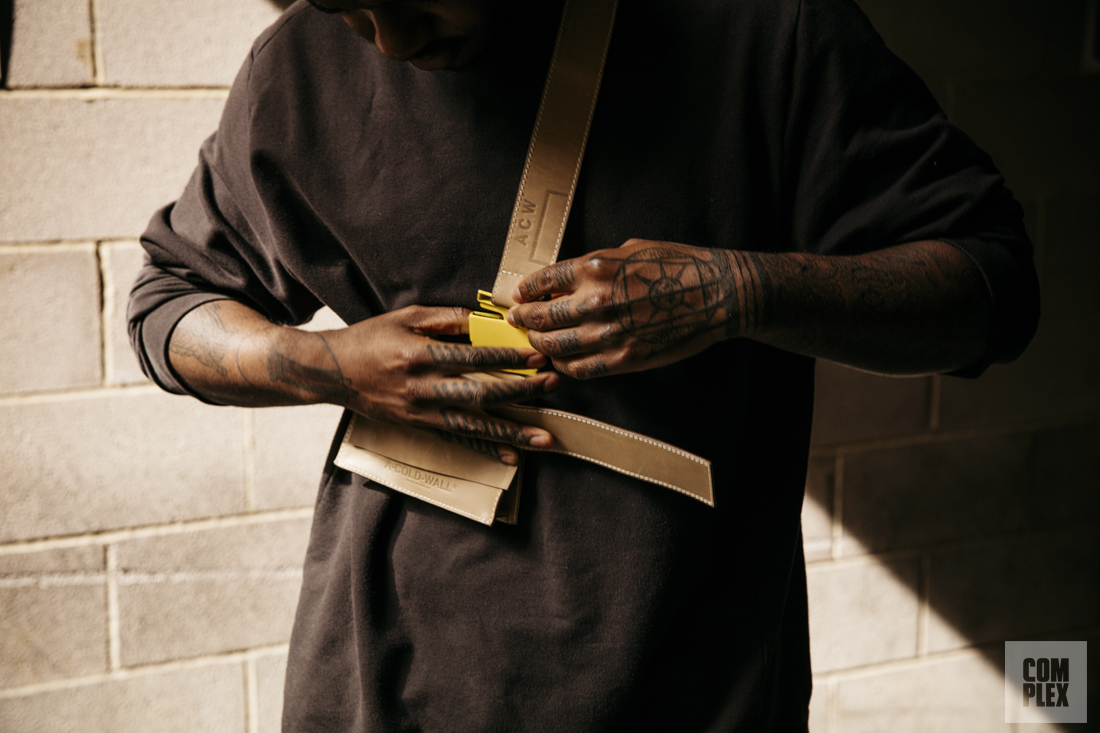
Ross grew up in Wellingborough, in Northamptonshire, England, a town of under 50,000 that sits roughly 60 miles northwest of London. It’s a Medieval place with a church built in 1160 that’s still standing. Wellingborough has a noted Caribbean and Indian population and can also claim Radiohead’s Thom Yorke as a native son. Ross describes his own upbringing as working class. “McDonald’s was my first proper job,” he recalls, although, as he told Business of Fashion last year, he earned extra money as a teenager by making fake Nike and Adidas clothing and selling it to his friends.
The early aptitude for design ended up being his ticket out. “Everyone else was staying and getting normal jobs in the ends, in the hood, or whatever,” he says. “I went to uni.” Ross graduated 1st Class Honors from De Montfort University in 2012 with a BA in graphic design and illustration. His work as a student was heavily infused with reference points from architecture, and he maintains that interest, peppering conversation with tidbits gleaned from a documentary on the design of public spaces in Renaissance Italy and citing architect Sir David Adjaye as an influence.
After completing his studies, he promptly landed a position at an ad agency. “It was great,” he says. “All they used to do was take us on beer lunches. We used to eat really good. Then it went under in like two months because no one was doing any work.”
"‘Why don’t we find some plastic in the backroom and stitch it to some leather, and then melt the plastic and put that onto a T-shirt?’ That’s my actual creative process.”
The rest of Ross’ trajectory from his ill-fated advertising career to now has the potential, years from now, to take on a mythical quality. He launched, then abandoned, a streetwear label called 2wnt4; along with his early design work, it was enough to grab the attention of Off-White designer Virgil Abloh. Ross worked as Abloh’s assistant for roughly three years, gaining entrée into his rarefied world, a ticket that came with access to Kanye West, for whom Abloh served as creative director. By 2013, one year after he graduated from De Montfort, Ross had contributed print design to then-emerging label Hood by Air. By 2014, he worked on West’s collection with French denim label A.P.C. and on the build-out of Abloh’s Paris showroom for Off-White. And then, in 2015, he set out on his own with A-Cold-Wall.
“Life’s been moving at 1,000 miles per hour for a long time now, since working with Virgil,” Ross says. “It’s been crazy.”
It’s certainly been an unusually fast climb for a newcomer in a notoriously challenging industry that is often unkind to its young, the working class, and to people of color, even as it steals cultural touchstones from all three. The uniqueness of his success is not lost on Ross. “People forget, when it comes to Jerry [Lorenzo, designer of L.A.’s Fear of God], and Virgil and ‘Ye and those guys—they forget that there’s over a decade between me and them,” he notes. “A-Cold-Wall is quite close in terms of their influence, but there’s still a lot of time before I get to their point, and I’m already here.”
The “here” in question includes two London studio spaces: A-Cold-Wall clothing hangs on the racks in elite shopping centers like Barneys and Harvey Nichols, and it is also becoming a booming e-commerce business. Including himself, Ross now has team of eight employees, a mix of full-time and part-time workers that range in age from 20 (Yi Ng, Ross’ Australian assistant) to 27 (Ace Harper, a fellow Off-White alum who handles PR and brand strategy).
“The hardest thing is, to be honest, having a young team, because everyone is inexperienced,” Ross says. “But, everyone is willing to work really hard. This is the highest level. It’s Barneys-level.”
Ng, who is accompanying Ross on factory visits today, is at the organizational center of A-Cold-Wall, requesting prices and measurements from the bag makers and relaying it back to Ross. Her phone is glued to her hand. After ensuring the utility holsters would be handled—bank holiday or not—she and Ross pile into a car with samples and swatches to take back to Ross’ new apartment in a high-rise on the Thames. On the way, the two reminisce about putting together the brand’s first London Fashion Week runway show last January, when the A-Cold-Wall team was only four people strong.
“It was good,” Ross says.
“It was madness,” Ng counters.

The show was held late at night at the end of a rainy day this past January, in a converted brewery in Shoreditch that somehow manages to hang on to a bit of genuine scruff despite its proximity to the self-consciously hip bars and restaurants of gentrified East London. “Our staff for the show ended up being a mix of 15 to 20 kids who are just in the scene, in the culture,” Ross says with a laugh. “These are kids from the ends who don’t like doing shit. They’re in a black puffer coat, full Nike tick, moving fences and stuff. And wanting to help! They’re obviously rough around the edges, but they do want to help.”
Though the runway was short in both physical length and runtime—only 13 looks—it offered a possible exploration of what the next phase of A-Cold-Wall could look like. Male and female models wore largely androgynous clothing that played with proportion and unconventional fabrics, with seams and stitching on full display. It was also noticeably more polished, even if this particular assortment didn’t necessarily reflect the order and quality control Ross has been striving to implement in his business.
“I only had three weeks to build the collection,” he explains. “Our pattern cutter said I was insane because we didn’t get to sample everything before it went on the runway.”
Ross was happy with the turnout and how the show was received; he garnered coverage from the usual streetwear-heavy sites that regularly cover A-Cold-Wall, in addition to write-ups on Vogue.com and in WWD. Additional buzz was generated by a possible future collaboration with Nike that debuted at the show, a grey and white NikeLab Air Force 1 sneaker with the ACW logo on the tongue and next to the brand’s trademark swoosh. Ross has an existing relationship with Nike—he’s designed packaging for their special product made with both Stone Island and Louis Vuitton men's artistic director Kim Jones—but he is coy about when that shoe will be available for purchase, if at all.
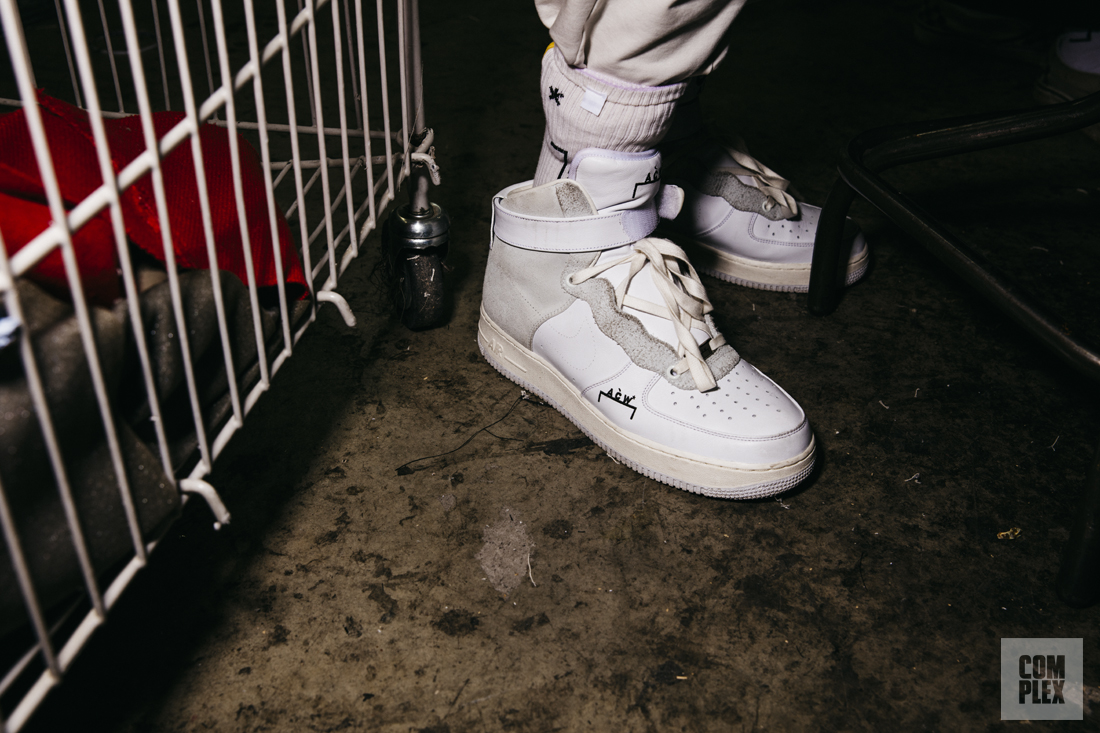
If the purpose of the sneaker and the show itself was to announce that A-Cold-Wall is only getting bigger, it worked. “It was a really good debut. It meant a lot for the brand to exist in that world,” Ross says. “It was more like, ‘This needs to happen at this point.’”
The British Fashion Council seems to agree. This morning, just a few months after its Fashion Week debut, the BFC announced that Ross was one of 14 designers awarded a place in its 2017 NEWGEN program, which provides financial support and behind-the-scenes help to emerging UK-based talent. “It’s the industry opening its pearly gates,” Ng says. “Alexander McQueen was a finalist. People in that lane. Luxury fashion.”
In the back of the car, she and Ross watch a video clip the BFC posted on its Instagram feed, listing the other recipients, like Grace Wales Bonner, Kiko Kostadinov, and Liam Hodges, as their names appear on the screen. “I’m glad Nicholas Daley got it,” Ross says. “That’s the homie.” Ross is hesitant to refer to his other peers as his friends. “It’s all circulated through the industry,” he says. “I just didn’t consider myself in it for a while.”
He is much more comfortable saying he’s part of “the culture”—the young people he knew in Wellingborough, the kids who volunteered at his show—even as his footprint in the industry continues to grow. “I think I felt like I was part of the culture, which has a huge impression on the fashion community,” he says. “But now I feel like, yeah, I’m actually part of it. I feel like what I’m doing has been—not justified, I didn’t need that. It was already working. I already had Barneys, Harvey Nichols, Selfridges. I had a Nike shoe before even joining BFC. But, I do feel like the work is being acknowledged and accredited and accepted. They actually revere the work I’m doing, and it’s being looked at properly and really critically, which is good.”
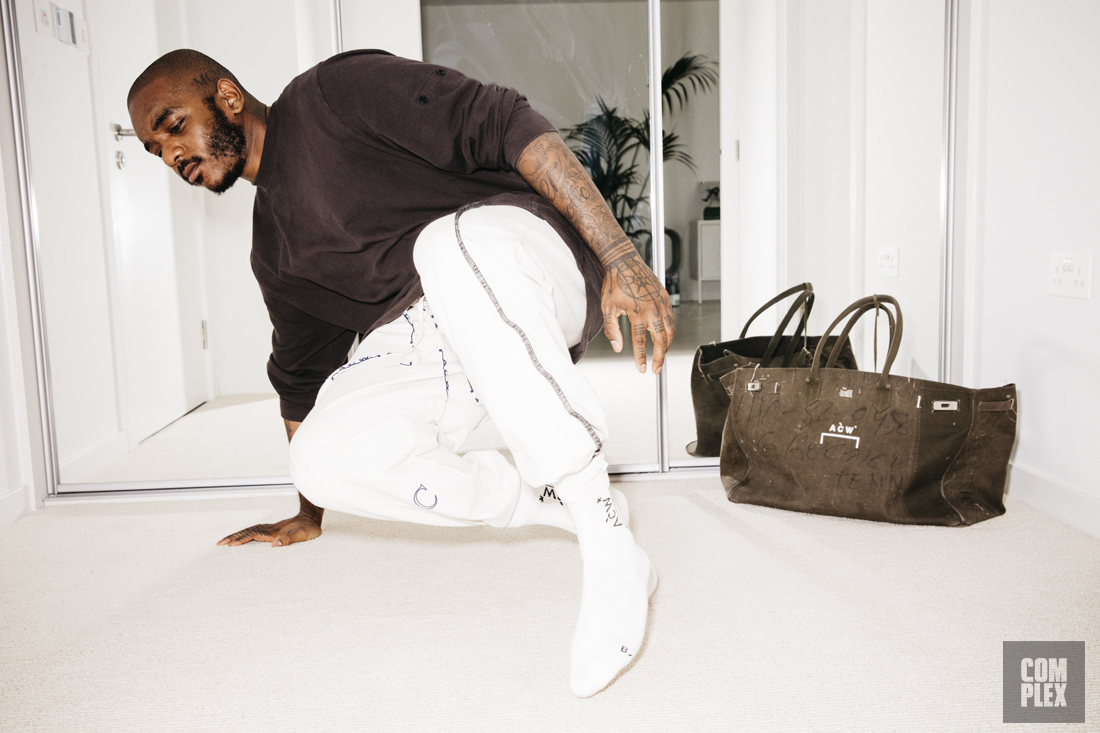
As the car approaches Ross’ new neighborhood, he looks out the window at a string of gleaming glass buildings. “This is a really good example of London’s poverty gap,” he says, pointing to towers with roof gardens on one side, and council estates on the other. “It’s just a bridge that separates both.”
The apartment Ross has occupied for the past two months is on the side with the roof gardens. He is the first tenant to live in his one bedroom sanctuary, a relatively Spartan white space in a luxury building with cement ceilings and a balcony overlooking London’s Docklands. Ross has acquired a leather couch, two potted plants, an electric piano keyboard, and a Dyson humidifier. A record from his friend, South African musician Petite Noir, is on display, although no record player appears to be present. There is also no TV, and in the bedroom, his mattress rests on the floor. Upon arrival, Ross and Ng both slip off their shoes.
“This makes all of the crazy hours make sense,” Ross says. “I can actually afford to do this now. Everywhere I’ve lived before, for the past six years, have all been workspaces. This is separate to the creative space I have.”
Creativity still finds a way in. He pulls out the keyboard and moves to the sofa. Ng mentions that Ross composed the soundtrack for his show as well as music for his website. Ross adds that he is self-taught. “I learned through FruityLoops,” he explains.
After a moment, Ross steps out onto the balcony, which is accessible from both his bedroom and living room. He points out a cable car sliding by—Ng says he shouted, “I’m too young to die!” the first time he rode it—and all of the new construction that, if developers have their way, will turn this previously desolate stretch into a hub for wealthy families and businesspeople. From the bedroom side of the balcony, he has a view of much lower income housing nearby, as well.
“There, it’s the hood,” he notes. “I’m more used to that, so this is insane. It’s weird. It feels good. It’s good that everything feels stable.” On the other side, the view stretches for miles. “When it’s a beautiful day,” he says, “it’s amazing.”


